Frantisek Drtikol est né en 1883 à Pribram en Bohême centrale, dans la famille d'un petit commerçant d'alimentation. Déjà enfant, il avait beaucoup de talent pour la peinture. Mais son père, un homme très réaliste, pensait qu'il fallait à son fils un métier plus sérieux et surtout plus lucratif. Frantisek Drtikol fait alors un apprentissage au studio du photographe Antonin Mattas à Pribram. Il est un peu ennuyé car il ne fait qu'assister son patron qui ne le laisse pas vraiment s'approcher de l'objectif. Un jour, il apprend par l'intermédiaire du magazine allemand l'Atelier des photographes (Das Atelier des Photographen) l'ouverture d'une école de photographie à Munich. Sans hésiter, il envoie sa demande à l'institution. Frantisek Drtikol, âgé de dix-huit ans, est admis et passe deux ans d'études en Allemagne.
Actualité Stolen Drtikol Photo Recovered During AIPAD Photography Show New York in March Livre Frantisek Drtikol - nudes by the Czech photographer Livre Frantisek Drtikol Photopoche Vente Lempertz - Photography Auctions in Cologne Vente Ventes : Photographie Moderne et Contemporaine - 25 mai 2016 Vente Photographs and Photobooks Auction | ADER NORDMANN Vente Auction : Modern and Contemporary Photographs Vente Christie's London : Auction Photographs / Vente aux enchères Vente Villa Grisebach, Berlin: Auction Modern and Contemporary Photographs Festival PHotoEspaña 2013 : 74 exhibitions and activities in Madrid, Alcalá de Henares, Alcobendas, Cuenca, Lanzarote and Zaragoza Exposition Exhibition : «Czech fundamental » at Museo di Roma in Trastevere Exposition Exposition collective : " Les femmes sont belles " Exposition Exhibition RealSurreal at Kunstmuseum Wolfsburg Exposition La BNF expose « La Photographie en cent chefs-d'oeuvre » Exposition Auer Photofoundation présente « Mouvances », Les Tribulations de la photographie dans le monde de l'art de 1888 à nos jours Exposition NUDES Positions of Nude Art Photography Exposition Photography! A special Collection from Leiden University Exposition REGARDS SUR LE CORPS Exposition Czech Photography of the 20th Century - Art and Exhibition Hall of the Federal Republic of Germany Exposition The Vision of the Other: Modernity and the Photographed Face Exposition Czech Photography of the 20th Century Exposition FASHION 9 decades of fashion photography Exposition Darkside - Photographic Desire and Sexuality Photographed Modifier l'image
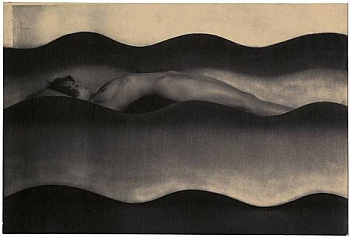 New York – Sometime before the Museum of Decorative Arts in Prague closed at 6 p.m. on Sunday, March 13, 2011, a thief walked up to a sensuous image of a female nude, looked around to make sure no one was watching, cut the photograph out of its frame, and boldly walked out of the museum.
The next morning, the museum reported that The Wave, 1925, by the important Czech photographer František Drtikol was missing. The piece is valued at upwards of a quarter of a million dollars.
Several months before, in January, Joseph Bellows of Joseph Bellows Gallery in La Jolla, CA, received an email from someone who wanted to know if the gallery would be interested in Drtikol’s The Wave.
“He asked if I would be interested in this photograph which had been given to his grandfather, who was a tailo...
New York – Sometime before the Museum of Decorative Arts in Prague closed at 6 p.m. on Sunday, March 13, 2011, a thief walked up to a sensuous image of a female nude, looked around to make sure no one was watching, cut the photograph out of its frame, and boldly walked out of the museum.
The next morning, the museum reported that The Wave, 1925, by the important Czech photographer František Drtikol was missing. The piece is valued at upwards of a quarter of a million dollars.
Several months before, in January, Joseph Bellows of Joseph Bellows Gallery in La Jolla, CA, received an email from someone who wanted to know if the gallery would be interested in Drtikol’s The Wave.
“He asked if I would be interested in this photograph which had been given to his grandfather, who was a tailo...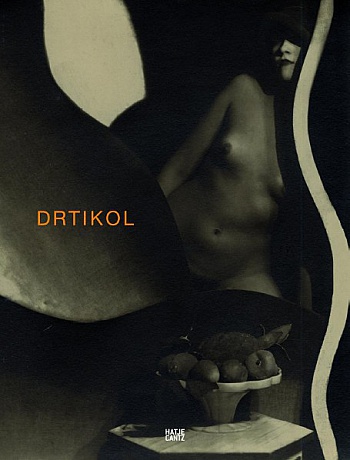 František Drtikol (1883–1961) is considered to be the first Czech photographer enjoying international fame. Anna Fárová’s legendary exhibit in Prague in 1972 led to the rediscovery of his briefly forgotten work. This elaborate, illustrated volume is devoted to the nude portraits, one of the focal points in Dritkol’s oeuvre. Art Nouveau and Symbolism were strong influences on his early photographs, in which his nudes are presented as dreamy nymphs or femme fatales. After the end of World War I, he developed his own fascinating photographic style, characterized by geometric elements, expressive, dynamic poses, and dramatic lighting. An “Art Deco photographer,” as Fárová called him, Drtikol was inspired by Futurism, Expressionism, and Cubism to discover his ow...
František Drtikol (1883–1961) is considered to be the first Czech photographer enjoying international fame. Anna Fárová’s legendary exhibit in Prague in 1972 led to the rediscovery of his briefly forgotten work. This elaborate, illustrated volume is devoted to the nude portraits, one of the focal points in Dritkol’s oeuvre. Art Nouveau and Symbolism were strong influences on his early photographs, in which his nudes are presented as dreamy nymphs or femme fatales. After the end of World War I, he developed his own fascinating photographic style, characterized by geometric elements, expressive, dynamic poses, and dramatic lighting. An “Art Deco photographer,” as Fárová called him, Drtikol was inspired by Futurism, Expressionism, and Cubism to discover his ow... Il incarne à lui seul l'esprit tchèque de l'entre-deux-guerres et la vitalité de la scène praguoise dont l'apport à la culture européenne reste essentiel. Née du pictorialisme, l'oeuvre de Drtikol est profondément marquée, dans une première phase, par le courant symboliste. Au tournant des années 1920, fonctionnalisme, cubisme, abstraction et art déco imprègnent ses recherches : la composition fait place à une géométrie nouvelle, l'éclairage se contraste, le nu se fragmente. De Prague, où il fut le fameux portraitiste des élites en vogue, à Paris, où la publication de ses nus consacra sa renommée internationale, Frantisek Drtikol a imposé par sa technique magistr...
Il incarne à lui seul l'esprit tchèque de l'entre-deux-guerres et la vitalité de la scène praguoise dont l'apport à la culture européenne reste essentiel. Née du pictorialisme, l'oeuvre de Drtikol est profondément marquée, dans une première phase, par le courant symboliste. Au tournant des années 1920, fonctionnalisme, cubisme, abstraction et art déco imprègnent ses recherches : la composition fait place à une géométrie nouvelle, l'éclairage se contraste, le nu se fragmente. De Prague, où il fut le fameux portraitiste des élites en vogue, à Paris, où la publication de ses nus consacra sa renommée internationale, Frantisek Drtikol a imposé par sa technique magistr...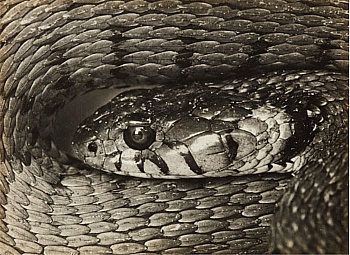 Auction 1068: Photography
Friday, 3 June 2016 2pm
Highlight of this sale is a group of vintage prints by Albert Renger-Patzsch, which includes his famous image "Natterkopf" from 1925. The exceptional work was published in 1928 in his photo book "Die Welt ist schön" (lot 20, €15,000–20,000). The piece was made together with two other animal portraits at Dresden Zoo (lots 18/19, each est. €5,000-6,000) and due to its fascinatingly abstract graphic qualities it has become one of Renger-Patzsch’s most famous works. "Natterkopf" will be coming under the hammer for the first time, together with a selection of other plant, object and landscape photographs by the artist.
A further top lot is an early 1920s vintage print of Karl Blossfeldt’s "Salvia Argent...
Auction 1068: Photography
Friday, 3 June 2016 2pm
Highlight of this sale is a group of vintage prints by Albert Renger-Patzsch, which includes his famous image "Natterkopf" from 1925. The exceptional work was published in 1928 in his photo book "Die Welt ist schön" (lot 20, €15,000–20,000). The piece was made together with two other animal portraits at Dresden Zoo (lots 18/19, each est. €5,000-6,000) and due to its fascinatingly abstract graphic qualities it has become one of Renger-Patzsch’s most famous works. "Natterkopf" will be coming under the hammer for the first time, together with a selection of other plant, object and landscape photographs by the artist.
A further top lot is an early 1920s vintage print of Karl Blossfeldt’s "Salvia Argent... Le 25 mai prochain, venez découvrir la vente organisée par Viviane Esders Photographie : « Photographie Moderne et Contemporaine »
© Gérard Rancinan "«Batman family girls», 2011 (estimation 35 000-45 000 €)
Hôtel Drouot - Paris - Salle 6 - 14h
Maître Yann Le Mouel, Viviane Esders Expert
© Berenice Abbott, New York by night, 1932 (estimation 15 000-25 000 €)
Expositions publiques
Mardi 24 mai 11h-18h
Mercredi 25 mai 11h-12h
Consultez le catalogue et enchérissez sur le site internet....
Le 25 mai prochain, venez découvrir la vente organisée par Viviane Esders Photographie : « Photographie Moderne et Contemporaine »
© Gérard Rancinan "«Batman family girls», 2011 (estimation 35 000-45 000 €)
Hôtel Drouot - Paris - Salle 6 - 14h
Maître Yann Le Mouel, Viviane Esders Expert
© Berenice Abbott, New York by night, 1932 (estimation 15 000-25 000 €)
Expositions publiques
Mardi 24 mai 11h-18h
Mercredi 25 mai 11h-12h
Consultez le catalogue et enchérissez sur le site internet.... Dimanche 15 novembre 2015 à 14h
Prestigious photobooks
Documentation on primitive photography.
Duchenne de Boulogne, Mécanisme de la physionomie humaine.
Germaine Krull, Der Akt.
Les nus de Drtikol.
Claude Cahun, Le cœur de pic.
Brassaï, Paris de nuit, Transmutations.
Man Ray, Facile.
Laure Albin Guillot, Micrographie Décorative, La Cantate du Narcisse.
Alexey Brodovitch, Ballet.
Joel-Peter Witkin, The Maxims of men disclose their hearts : The journal of Joel-Peter Witkin.
Frantisek Drtikol, Les nus de Drtikol. [1929]
Portfolio of 30 photogravures
Old, modern and contemporary photographs
Beautiful set of daguerreotypes including a rare portrait by Daguerre.
Adrien Tournachon, Race chevaline, concours de 1860 : album of 41 salted paper prints.
Exceptional p...
Dimanche 15 novembre 2015 à 14h
Prestigious photobooks
Documentation on primitive photography.
Duchenne de Boulogne, Mécanisme de la physionomie humaine.
Germaine Krull, Der Akt.
Les nus de Drtikol.
Claude Cahun, Le cœur de pic.
Brassaï, Paris de nuit, Transmutations.
Man Ray, Facile.
Laure Albin Guillot, Micrographie Décorative, La Cantate du Narcisse.
Alexey Brodovitch, Ballet.
Joel-Peter Witkin, The Maxims of men disclose their hearts : The journal of Joel-Peter Witkin.
Frantisek Drtikol, Les nus de Drtikol. [1929]
Portfolio of 30 photogravures
Old, modern and contemporary photographs
Beautiful set of daguerreotypes including a rare portrait by Daguerre.
Adrien Tournachon, Race chevaline, concours de 1860 : album of 41 salted paper prints.
Exceptional p...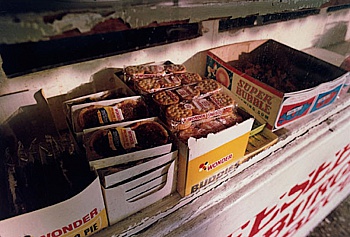 On Wednesday 26 November over 250 lots of modern and contemporary photography will be auctioned at Villa Grisebach in Berlin.
The modern photography selection is lead by two vintage pigment prints by the Czech photographer Frantisek Drtikol, dating from the mid-1920s. Depicting scenes typical of Drtikol’s output, "The Movement" and "Akt" work with elements of art deco, the theatre and of abstraction; only very rarely do works of this quality appear on the market (each €15,000/25,000). Two outstanding examples of early twentieth century pictorial photography are provided in the form of works by Rudolf Koppitz ("Esche", bromoil transfer print, c. 1912, €15,000/20,000) and Heinrich Kühn ("Pustertalerinnen", bromoil transfer print on Japan paper, 1913-1914, &eur...
On Wednesday 26 November over 250 lots of modern and contemporary photography will be auctioned at Villa Grisebach in Berlin.
The modern photography selection is lead by two vintage pigment prints by the Czech photographer Frantisek Drtikol, dating from the mid-1920s. Depicting scenes typical of Drtikol’s output, "The Movement" and "Akt" work with elements of art deco, the theatre and of abstraction; only very rarely do works of this quality appear on the market (each €15,000/25,000). Two outstanding examples of early twentieth century pictorial photography are provided in the form of works by Rudolf Koppitz ("Esche", bromoil transfer print, c. 1912, €15,000/20,000) and Heinrich Kühn ("Pustertalerinnen", bromoil transfer print on Japan paper, 1913-1914, &eur...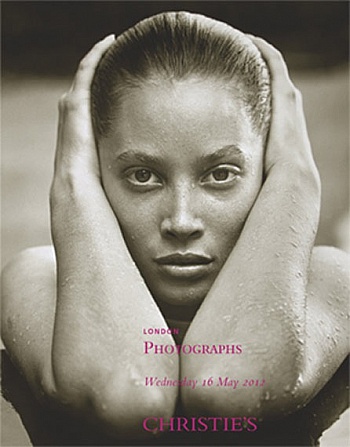 Christie’s Photographs sale on Wednesday 16 May features over 100 works with estimates ranging from £3,000 to £120,000.
The sale brings the story of photography closer to the present with some of the most recognisable contemporary practitioners: a diptych by Andreas Gursky, who currently holds the auction record for the medium, entitled Schiesser, Diptych, 1991 (estimate: £80,000–120,000); Hiroshi Sugimoto’s Guggenheim Museum, New York, 1997 (estimate: £70,000–90,000) and Helmut Newton’s large format Self-Portrait with Wife and Models ‘Vogue’ Studios, Paris 1980, measuring 139.7 x 144.8 cm (estimate: £70,000–90,000).
This is an opportunity to acquire some of the most important works of the history of photography, with works by 19th c...
Christie’s Photographs sale on Wednesday 16 May features over 100 works with estimates ranging from £3,000 to £120,000.
The sale brings the story of photography closer to the present with some of the most recognisable contemporary practitioners: a diptych by Andreas Gursky, who currently holds the auction record for the medium, entitled Schiesser, Diptych, 1991 (estimate: £80,000–120,000); Hiroshi Sugimoto’s Guggenheim Museum, New York, 1997 (estimate: £70,000–90,000) and Helmut Newton’s large format Self-Portrait with Wife and Models ‘Vogue’ Studios, Paris 1980, measuring 139.7 x 144.8 cm (estimate: £70,000–90,000).
This is an opportunity to acquire some of the most important works of the history of photography, with works by 19th c...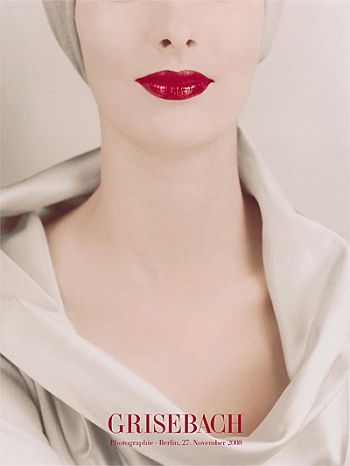 Now online:
Catalogue No. 159: Modern and Contemporary Photographs
www.villa-grisebach.de/en/catalogues/
Auction on Thursday, 27 November 2008, at 3 p.m.
Viewing from 22 to 26 November in Berlin, Fasanenstrasse 73.
Saturday - Tuesday, 10 a.m. - 6.30 p.m.
Wednesday, 10 a.m. - 5 p.m.
...
Now online:
Catalogue No. 159: Modern and Contemporary Photographs
www.villa-grisebach.de/en/catalogues/
Auction on Thursday, 27 November 2008, at 3 p.m.
Viewing from 22 to 26 November in Berlin, Fasanenstrasse 73.
Saturday - Tuesday, 10 a.m. - 6.30 p.m.
Wednesday, 10 a.m. - 5 p.m.
...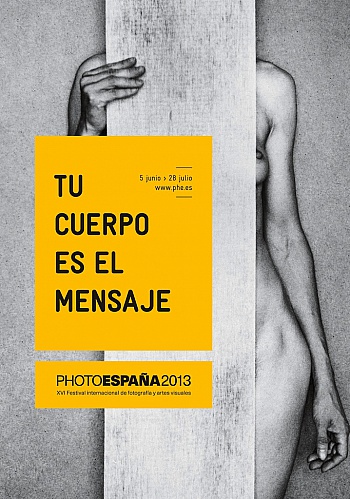 Between June 5 and July 28, PHotoEspaña 2013, the XVI edition of the international festival of photography and visual arts, presents 74 exhibitions with works by 328 artists from 42 countries and an ample selection of public and professional activities. Lanzarote, Zaragoza and Prague are added to Madrid, Cuenca, Alcalá de Henares, and Alcobendas as venues of the festival.
© Ricard Terré, Sant Boi de Llobregat
In his last years as general curator of the festival, Gerardo Mosquera presents an exhibition program that revolves around the theme, Body. Eros and Politics, which look at the diversity with which photography has approached one of its major themes: the human body.
© Birgit Jürgenssen, Untitled (Self with Little Fur), 1974-1977
...
Between June 5 and July 28, PHotoEspaña 2013, the XVI edition of the international festival of photography and visual arts, presents 74 exhibitions with works by 328 artists from 42 countries and an ample selection of public and professional activities. Lanzarote, Zaragoza and Prague are added to Madrid, Cuenca, Alcalá de Henares, and Alcobendas as venues of the festival.
© Ricard Terré, Sant Boi de Llobregat
In his last years as general curator of the festival, Gerardo Mosquera presents an exhibition program that revolves around the theme, Body. Eros and Politics, which look at the diversity with which photography has approached one of its major themes: the human body.
© Birgit Jürgenssen, Untitled (Self with Little Fur), 1974-1977
...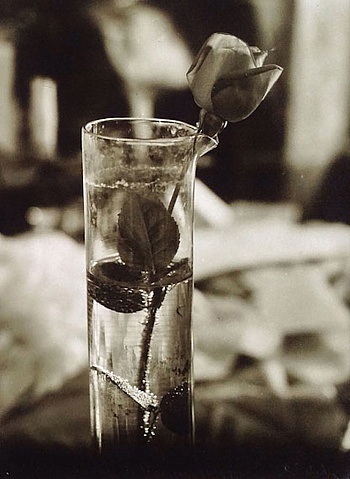 The exhibition Czech Fundamental is organized by gallery Photo Edition Berlin in collaboration with Museo di Roma in Trastevere and Centro Sperimentale di Fotografia, Rome. The exhibit engages the viewer in a dialogue between old and new - Czech photography from the very beginnings of the avant-garde in the 1920s, to a broad selection of contemporary artists whose works exhibit an individual, authorial or experimental approach to the medium. Featured are photographs fundamental to the development of a specifically Czech vision - Frantisek Drtikol's nudes, Jaroslav Rossler's and Jaromir Funke's contemplative compositions, surreal arrangements by Vaclav Zykmund and Josef Sudek's poetic still-lifes. The exhibition presents Constructivism, Surrealism and New Objectivity from 1920 - 1945. The second section pr...
The exhibition Czech Fundamental is organized by gallery Photo Edition Berlin in collaboration with Museo di Roma in Trastevere and Centro Sperimentale di Fotografia, Rome. The exhibit engages the viewer in a dialogue between old and new - Czech photography from the very beginnings of the avant-garde in the 1920s, to a broad selection of contemporary artists whose works exhibit an individual, authorial or experimental approach to the medium. Featured are photographs fundamental to the development of a specifically Czech vision - Frantisek Drtikol's nudes, Jaroslav Rossler's and Jaromir Funke's contemplative compositions, surreal arrangements by Vaclav Zykmund and Josef Sudek's poetic still-lifes. The exhibition presents Constructivism, Surrealism and New Objectivity from 1920 - 1945. The second section pr... Nous ne nierons pas l’évidente référence à Women Are Beautiful, l’emblématique série de photographies prises sur le vif par Garry Winogrand dans les années 1960 et 1970. À notre tour de rendre hommage à la féminité, à travers un ensemble d’images dues pour la plupart aux photographes que nous représentons. Belle, fière et presque insolente, Marlene au Café Lehmitz (Anders Petersen). Belles, ces jambes gainées de soie noire (Nathalie Amand). Belle, cette promeneuse parisienne (Mark Steinmetz).
Belle, cette autre Parisienne, fantôme nocturne (Bernard Descamps). Belle et sensuelle, cette danseuse dans un juke joint du Mississippi (Bill Steber). Belles, cette vendeuse de paille et cette m...
Nous ne nierons pas l’évidente référence à Women Are Beautiful, l’emblématique série de photographies prises sur le vif par Garry Winogrand dans les années 1960 et 1970. À notre tour de rendre hommage à la féminité, à travers un ensemble d’images dues pour la plupart aux photographes que nous représentons. Belle, fière et presque insolente, Marlene au Café Lehmitz (Anders Petersen). Belles, ces jambes gainées de soie noire (Nathalie Amand). Belle, cette promeneuse parisienne (Mark Steinmetz).
Belle, cette autre Parisienne, fantôme nocturne (Bernard Descamps). Belle et sensuelle, cette danseuse dans un juke joint du Mississippi (Bill Steber). Belles, cette vendeuse de paille et cette m...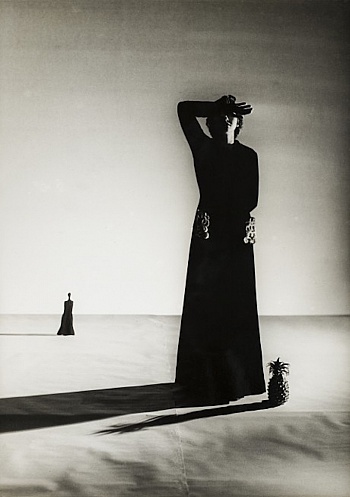 15 November 2014 – 6 April 2015
Nothing gives Surrealism as much meaning as photography. Salvador Dalí, 1929
Erwin Blumenfeld
Skull, 1932/33
Solarisation on gelatin silver paper, 29.6 x 24 cm
photo: Christian P. Schmieder, Munich
© The Estate of Erwin Blumenfeld
Is a photograph a true-to-life reproduction of reality, or is it merely a staged image? This year – the 175th anniversary of the invention of photography – the Kunstmuseum Wolfsburg responds to this question with a comprehensive survey of avant-garde photography between 1920 and 1950. The exhibition RealSurreal presents around 200 masterpieces from the eminent Siegert Collection in Munich. This collection, which has never been shown in its entirety, contains photographs from the Neues Sehen (‘New Vision&rs...
15 November 2014 – 6 April 2015
Nothing gives Surrealism as much meaning as photography. Salvador Dalí, 1929
Erwin Blumenfeld
Skull, 1932/33
Solarisation on gelatin silver paper, 29.6 x 24 cm
photo: Christian P. Schmieder, Munich
© The Estate of Erwin Blumenfeld
Is a photograph a true-to-life reproduction of reality, or is it merely a staged image? This year – the 175th anniversary of the invention of photography – the Kunstmuseum Wolfsburg responds to this question with a comprehensive survey of avant-garde photography between 1920 and 1950. The exhibition RealSurreal presents around 200 masterpieces from the eminent Siegert Collection in Munich. This collection, which has never been shown in its entirety, contains photographs from the Neues Sehen (‘New Vision&rs...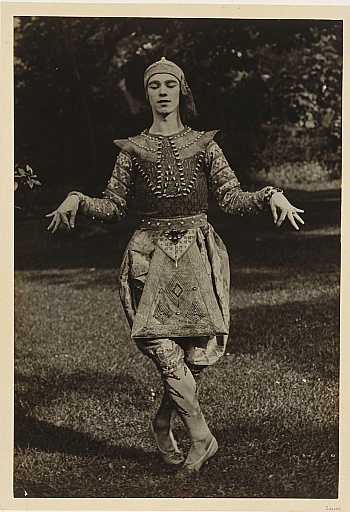 La photographie en cent chefs-d’œuvre
Explorer la notion de chef-d’œuvre appliquée à un médium aussi foisonnant et divers que la photographie, tel est le propos de cette exposition qui dévoile cent images issues des collections de la BnF. Choisies pour leur beauté, la perfection de leur tirage ou leur provenance, ces pièces, toutes d’auteurs différents, composent un parcours où les grands noms de la photographie des XIXe et XXe siècles côtoient des anonymes.
« Choisir parmi les trésors photographiques que conserve la Bibliothèque est un exercice difficile auquel notre collection se prête avec bonheur. Photographies d’art, documentaires, scientifiques, images issu...
La photographie en cent chefs-d’œuvre
Explorer la notion de chef-d’œuvre appliquée à un médium aussi foisonnant et divers que la photographie, tel est le propos de cette exposition qui dévoile cent images issues des collections de la BnF. Choisies pour leur beauté, la perfection de leur tirage ou leur provenance, ces pièces, toutes d’auteurs différents, composent un parcours où les grands noms de la photographie des XIXe et XXe siècles côtoient des anonymes.
« Choisir parmi les trésors photographiques que conserve la Bibliothèque est un exercice difficile auquel notre collection se prête avec bonheur. Photographies d’art, documentaires, scientifiques, images issu... Alors que notre regard est submergé quotidiennement par une iconographie abondante, nous oublions l'essence même de ces images à voir. La photographie est affichée dans la rue, orne et illustre notre presse, alimente jusqu'à l'encombrement, notre visuel technologique. Elle est si présente qu'elle arrive à brouiller les pistes comme une élégante lady qui parvient à dissimuler son âge.
L'image n'est pas dur au hasard ni à l'appareil photographique, elle est l'eouvre d'un auteur, d'un créateur de mondes, d'un poète ou d'un inventeur.
La première image est obtenue le 5 mai 1816 par Joseph Nicéphore Niépce, il n'arrive pas à transformer ses n...
Alors que notre regard est submergé quotidiennement par une iconographie abondante, nous oublions l'essence même de ces images à voir. La photographie est affichée dans la rue, orne et illustre notre presse, alimente jusqu'à l'encombrement, notre visuel technologique. Elle est si présente qu'elle arrive à brouiller les pistes comme une élégante lady qui parvient à dissimuler son âge.
L'image n'est pas dur au hasard ni à l'appareil photographique, elle est l'eouvre d'un auteur, d'un créateur de mondes, d'un poète ou d'un inventeur.
La première image est obtenue le 5 mai 1816 par Joseph Nicéphore Niépce, il n'arrive pas à transformer ses n...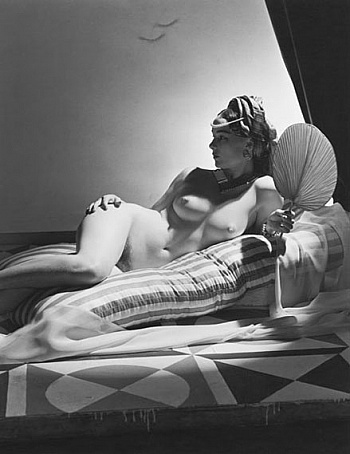 A group exhibition mainly curated from its own collection, displaying more than 40 photographers and their perspectives on mostly female nude art. Selected classics are supplemented with, in some cases, never before exhibited contemporary works of Blaise Reutersward, Nadav Kander, or Ralph Mecke.
The kaleidoscopic exhibition stretches from classical, nearly sculptural studio-stagings, as in the works of Horst P. Horst, Frantisek Drtikol, or Rudolf Koppitz, to the erotic and provocative images of Helmut Newton or Bettina Rheims, and extending to the series of documentary pictures by recently-deceased Larry Sultan, which originated off-set during pornographic shootings.
The studio-photography of the Pictorialists was followed by trend-setting picture experiments in the 1920s. Artists like Man Ray, Andr?© K&e...
A group exhibition mainly curated from its own collection, displaying more than 40 photographers and their perspectives on mostly female nude art. Selected classics are supplemented with, in some cases, never before exhibited contemporary works of Blaise Reutersward, Nadav Kander, or Ralph Mecke.
The kaleidoscopic exhibition stretches from classical, nearly sculptural studio-stagings, as in the works of Horst P. Horst, Frantisek Drtikol, or Rudolf Koppitz, to the erotic and provocative images of Helmut Newton or Bettina Rheims, and extending to the series of documentary pictures by recently-deceased Larry Sultan, which originated off-set during pornographic shootings.
The studio-photography of the Pictorialists was followed by trend-setting picture experiments in the 1920s. Artists like Man Ray, Andr?© K&e...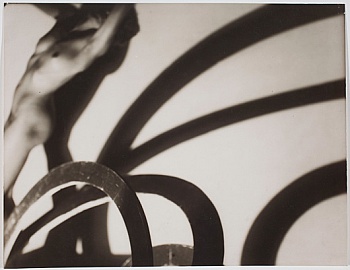 The oldest known image of the camera obscura principle (1545), the original camera belonging to painter George Hendrik Breitner, daguerreotypes over 150 years old: Leiden University's photographic collection is unique in many ways. It is both the oldest and the largest museological photography collection in the country, telling the whole story of the emergence and development of photography. It also includes work by contemporary photographers, and 'classic' works by photographers like Alfred Stieglitz and Diane Arbus. The largest ever exhibition of pieces from this unique collection can be seen at The Hague Museum of Photography from 23 January.
Despite resistance from both artists and academics - who felt it was 'beneath them' - in 1953 Hans van de Waal, professor of art history at the Leiden University, began the un...
The oldest known image of the camera obscura principle (1545), the original camera belonging to painter George Hendrik Breitner, daguerreotypes over 150 years old: Leiden University's photographic collection is unique in many ways. It is both the oldest and the largest museological photography collection in the country, telling the whole story of the emergence and development of photography. It also includes work by contemporary photographers, and 'classic' works by photographers like Alfred Stieglitz and Diane Arbus. The largest ever exhibition of pieces from this unique collection can be seen at The Hague Museum of Photography from 23 January.
Despite resistance from both artists and academics - who felt it was 'beneath them' - in 1953 Hans van de Waal, professor of art history at the Leiden University, began the un...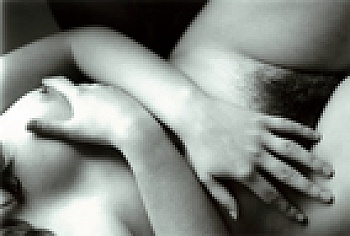 La représentation du nu désigne une forme d'art qui essaie de recréer une image du corps humain magnifié, idéalisé. A ceci il convient de préciser qu'en matière de nu et de sa représentation, la transgression de la morale n'est jamais loin ; le nu se balade de plus en plus souvent sans pudeur, en chair et à poil au-delà de ce que le bienséance accepte. Qui s'en plaindrait? Partagé entre l'art et le cochon, le nu offre le paradoxe à la fois, d'exciter l'imagination et nos fantasmes, et en même temps de ne rien cacher. Quand l'image nous invite à partager ce degré d'intimité du regard, il est presque difficile de garder nos distances.
C'est à un choix un peu voyeur et totalement subjectif q...
La représentation du nu désigne une forme d'art qui essaie de recréer une image du corps humain magnifié, idéalisé. A ceci il convient de préciser qu'en matière de nu et de sa représentation, la transgression de la morale n'est jamais loin ; le nu se balade de plus en plus souvent sans pudeur, en chair et à poil au-delà de ce que le bienséance accepte. Qui s'en plaindrait? Partagé entre l'art et le cochon, le nu offre le paradoxe à la fois, d'exciter l'imagination et nos fantasmes, et en même temps de ne rien cacher. Quand l'image nous invite à partager ce degré d'intimité du regard, il est presque difficile de garder nos distances.
C'est à un choix un peu voyeur et totalement subjectif q...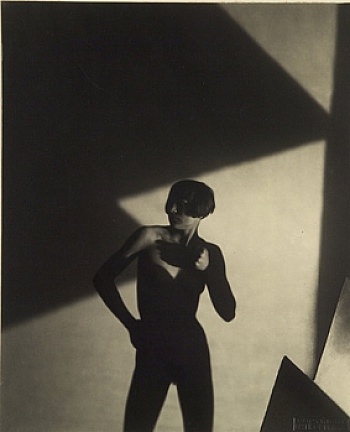 From Surrealism and other avant-garde experimentation to realism and classic photo reportage, Czech photographers have long played a key role in all areas of photography and continue to do so to this day.
This exhibition is the first in Germany to present the history and development of Czech photography from 1900 to the turn of the millennium. Beginning with Art Nouveau-inspired pictorialism, the comprehensive survey traces the rise of avant-garde photography and the development of photo montage in the 1920s to the 1940s. It examines the influence of ideological pressure on photography during the Second World War, the Stalinist 1950s and the period of Communist 'normalisation' after the occupation in 1968 and introduces the visitor to the multifaceted range of contemporary trends.
With more than 440 photographs alo...
From Surrealism and other avant-garde experimentation to realism and classic photo reportage, Czech photographers have long played a key role in all areas of photography and continue to do so to this day.
This exhibition is the first in Germany to present the history and development of Czech photography from 1900 to the turn of the millennium. Beginning with Art Nouveau-inspired pictorialism, the comprehensive survey traces the rise of avant-garde photography and the development of photo montage in the 1920s to the 1940s. It examines the influence of ideological pressure on photography during the Second World War, the Stalinist 1950s and the period of Communist 'normalisation' after the occupation in 1968 and introduces the visitor to the multifaceted range of contemporary trends.
With more than 440 photographs alo...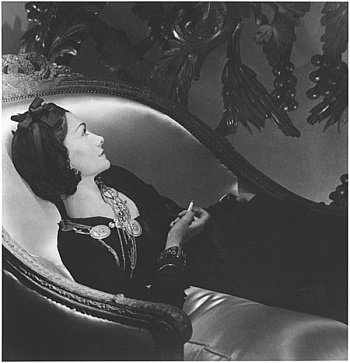 KOWASA gallery presents "The Vision of the Other: Modernity and the Photographed Face", a group show which attempts to define the way in which the human face was photographically constructed before its abolition by Postmodernism. The exhibition primarily offers a thorough insight into the history of portrait photography with a special emphasis on the shift of the portrait from being a mere "extension of the painted body" to being the photographic genre par excellence. At the same time it highlights the aesthetic and conceptual evolution of early portraiture from Pictorialism towards a modernist experimentation and subjectivity.
The exhibition gathers more than 70 black and white prints whose protagonists are Coco Chanel, Ernest Heminway, André Breton, Marc Chagall, Dalí, Josep Pl...
KOWASA gallery presents "The Vision of the Other: Modernity and the Photographed Face", a group show which attempts to define the way in which the human face was photographically constructed before its abolition by Postmodernism. The exhibition primarily offers a thorough insight into the history of portrait photography with a special emphasis on the shift of the portrait from being a mere "extension of the painted body" to being the photographic genre par excellence. At the same time it highlights the aesthetic and conceptual evolution of early portraiture from Pictorialism towards a modernist experimentation and subjectivity.
The exhibition gathers more than 70 black and white prints whose protagonists are Coco Chanel, Ernest Heminway, André Breton, Marc Chagall, Dalí, Josep Pl...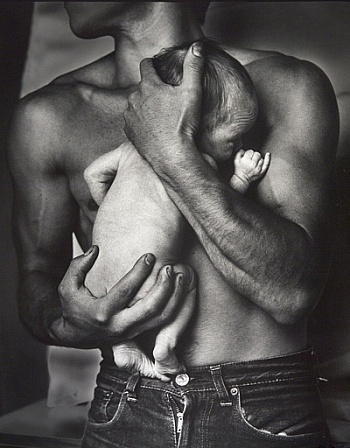 The exhibition was prepared in cooperation with the Museum of Decorative Arts in Prague.
Czech photography produced and produces leading figures in all areas of photography - from classical documentary photojournalism to surrealism, realism or avant-garde works. From 13 March 2009 on, the Art and Exhibition Hall of the Federal Republic of Germany is presenting over 440 photographic works, a historical mosaic of Czech photography from 1900 until the late 20th century that underlines the international reputation enjoyed by Czech photography today. That reputation is not only apparent in the outstanding contributions by such renowned artists as Josef Sudek, Karel Hájek, Václav Jírů, Vilém Reichmann, Jan Reich, Jindřich Streit, František Drtikol, Jaromír Funke, Jaroslav R&...
The exhibition was prepared in cooperation with the Museum of Decorative Arts in Prague.
Czech photography produced and produces leading figures in all areas of photography - from classical documentary photojournalism to surrealism, realism or avant-garde works. From 13 March 2009 on, the Art and Exhibition Hall of the Federal Republic of Germany is presenting over 440 photographic works, a historical mosaic of Czech photography from 1900 until the late 20th century that underlines the international reputation enjoyed by Czech photography today. That reputation is not only apparent in the outstanding contributions by such renowned artists as Josef Sudek, Karel Hájek, Václav Jírů, Vilém Reichmann, Jan Reich, Jindřich Streit, František Drtikol, Jaromír Funke, Jaroslav R&... Gallery Camera Work in Berlin presents from September 20th until November 15th an exhibition of fashion photography of the 20th and 21st centuries. This group exhibition provides a representative overview of the development of fashion photography from its beginnings in the 1920s to the present time. With over 250 works of a total of 65 photographers - many of which are vintages - one can trace the different trends of fashion photography.
The spectrum of the photographs on display ranges from the sometimes classic compositions of an Edward Steichen to the experimental photographs of Man Ray, from the sexual revolution to the resulting emancipation of women as shown for example by Helmut Newton, from the cool elegance of the 1990s - influenced by Peter Lindbergh - to the highly imaginative works of a Tim Walker. On...
Gallery Camera Work in Berlin presents from September 20th until November 15th an exhibition of fashion photography of the 20th and 21st centuries. This group exhibition provides a representative overview of the development of fashion photography from its beginnings in the 1920s to the present time. With over 250 works of a total of 65 photographers - many of which are vintages - one can trace the different trends of fashion photography.
The spectrum of the photographs on display ranges from the sometimes classic compositions of an Edward Steichen to the experimental photographs of Man Ray, from the sexual revolution to the resulting emancipation of women as shown for example by Helmut Newton, from the cool elegance of the 1990s - influenced by Peter Lindbergh - to the highly imaginative works of a Tim Walker. On...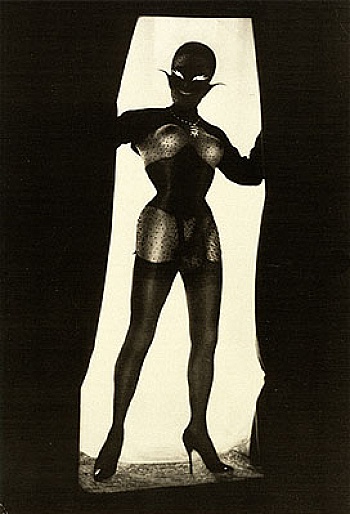 Photography is present everywhere. It plays a formative role in all societies and in private, public, intimate, commercial, and "free" areas of our lives. It is also present in the closed off areas, there where it is "dark", where we withdraw from society, or where acts are excluded from society. For eroticism, sexuality, desire, and identity, photography is a central visual tool: as document, stimulation, instrument of power, and as artistic form of expression.
The exhibition and book project Darkside will discuss photography as an instrument of representation and as an important visual catalyst of sexuality. Photography shows and stylizes lust and passion, fantasy and desire, power and violence, voyeurism and self-presentation in sexuality. Fantasy and desire form a thrilling pact with photograph...
Photography is present everywhere. It plays a formative role in all societies and in private, public, intimate, commercial, and "free" areas of our lives. It is also present in the closed off areas, there where it is "dark", where we withdraw from society, or where acts are excluded from society. For eroticism, sexuality, desire, and identity, photography is a central visual tool: as document, stimulation, instrument of power, and as artistic form of expression.
The exhibition and book project Darkside will discuss photography as an instrument of representation and as an important visual catalyst of sexuality. Photography shows and stylizes lust and passion, fantasy and desire, power and violence, voyeurism and self-presentation in sexuality. Fantasy and desire form a thrilling pact with photograph...